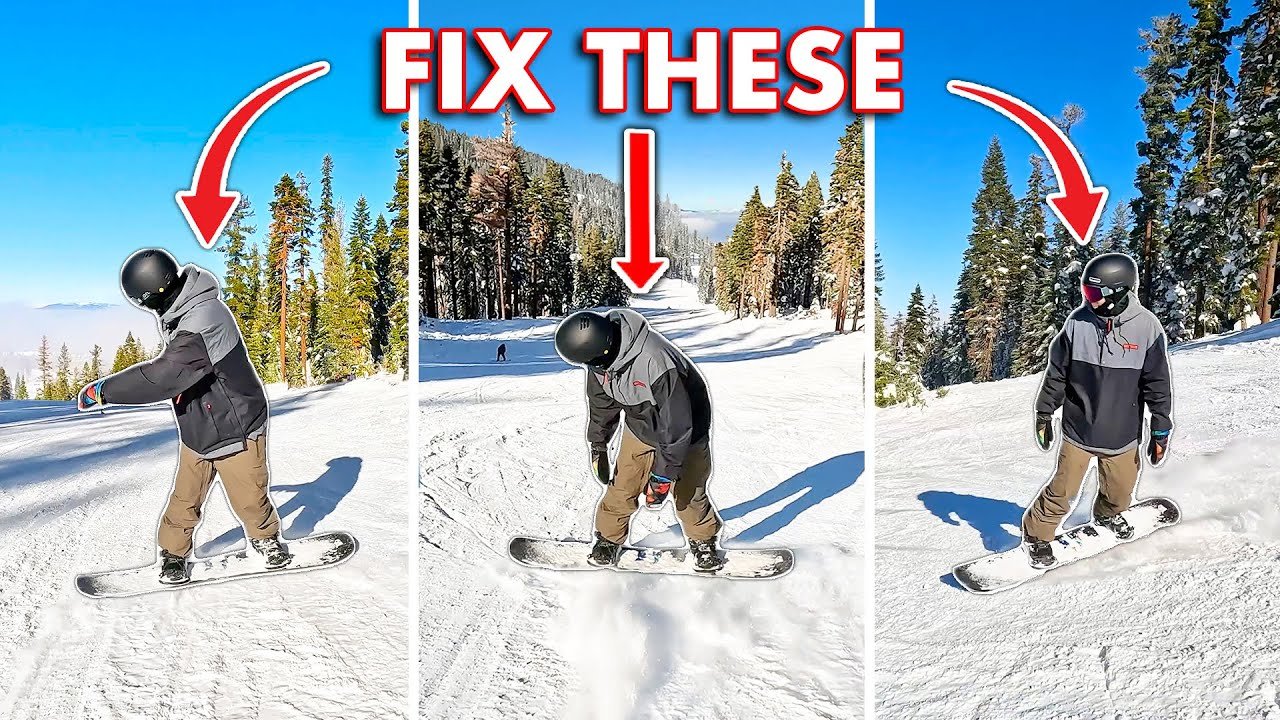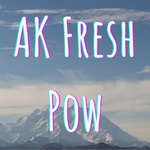
Fix These 3 Common Snowboard Problems
In the video “Fix These 3 Common Snowboard Problems” by SnowboardProCamp, Kevin provides tips on how to address three common issues with snowboard turns. The first problem he addresses is leaning at the waist and having the upper body and shoulders lean towards the snow. Kevin explains that this limits progress and can lead to more falls, and suggests riding with a straight back and chest to maintain better balance. The second problem he discusses is twisting at the waist and allowing the back hand to come around, which can make the rider unstable and unbalanced. Kevin suggests slowing down on the heels, pulling the back hand back, and looking over the shoulder as a way to fix this issue. Lastly, he talks about the problem of doing short toe turns, which can lead to loss of flow and balance. To address this, Kevin recommends counting to three in your head to spend the same amount of time on the heels as on the toes, allowing for better control and reduced strain on the legs. By following these tips, snowboarders can improve their technique and progress to more challenging turns.
Common Snowboard Problems
Snowboarding is a thrilling and adventurous sport, but it can also be frustrating when facing certain common problems that affect the performance and overall enjoyment of the ride. In this article, we will explore three of the most common snowboard problems and provide tips to help fix them. By understanding these issues and implementing the suggested solutions, snowboarders can improve their technique, maintain better balance, and progress in their snowboarding journey.
Breaking at the waist
One of the most common problems encountered by snowboarders, especially beginners, is the tendency to break at the waist while turning. Breaking at the waist refers to the act of leaning the upper body and shoulders down towards the snow, resulting in an unbalanced and restricted position. This posture limits progress and increases the risk of falls.
Breaking at the waist is often driven by fear and a desire to be closer to the ground in case of a fall. However, by maintaining this position, snowboarders compromise their balance and weight distribution. To fix this problem, it is essential to focus on proper body positioning.
When turning, rather than breaking at the waist, snowboarders should aim to keep their back straight and chest up. By bending the knees and hips while keeping the back and chest upright, the weight remains centered over the snowboard, leading to better balance and control. Standing up tall helps distribute the weight evenly and prevents excess weight on the toe edge, which can cause sliding out on the toes. By implementing this adjustment in body posture, snowboarders can progress further in their snowboarding journey.

Getting twisted at the waist
Another common issue that snowboarders face is getting twisted at the waist and having the back hand come around during turns. Twisting at the waist is a natural instinct and an effective way to achieve quick turns. However, it leads to instability and imbalanced body positioning, especially when riding on more challenging terrains.
Getting twisted at the waist can be fixed by consciously slowing down on the heels and actively pulling back the back hand while looking over the shoulder. By applying pressure on the heels and pulling the back hand back, snowboarders regain control and stability. This adjustment allows for smoother turns, enhanced control, and improved balance. Overcoming the habit of getting twisted at the waist will help riders progress from easier terrains to more challenging ones, facilitating a more enjoyable and fluid snowboarding experience.
Doing short toe turns
Snowboarders often struggle with executing proper toe turns, resulting in shorter turns that can disrupt flow and create issues with speed control. The discomfort of looking over the shoulder and the awkward positioning on the toe edge contribute to this problem.
To fix the issue of doing short toe turns, snowboarders should focus on spending an equal amount of time on their heels and toes during the turning process. By counting to three in their head, riders can ensure they allocate the same duration to their heel and toe edges. This deliberate rhythm helps maintain balance, reduces strain on the legs, and promotes better flow during turns.
By implementing this counting technique, snowboarders will notice improvements in their ability to control speed, reduce chattering on the heels, and maintain a smoother riding experience. It is important to practice this method consistently to develop muscle memory and improve overall snowboarding skills.
Conclusion
Snowboarding can be an incredibly rewarding and enjoyable activity. However, it is not without its challenges. By identifying and addressing common snowboard problems such as breaking at the waist, getting twisted at the waist, and doing short toe turns, riders can enhance their technique, maintain better balance, and progress in their snowboarding journey.
It is crucial to remember that mastering these adjustments takes practice and patience. By implementing the tips and techniques discussed in this article, snowboarders can overcome these common problems and experience the exhilaration of gliding down the slopes with confidence and control. So, gear up, hit the slopes, and remember to have fun while progressing in your snowboarding skills!
